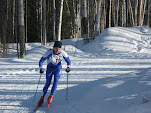Dipnetting and Alaskan-Style Bonding: The Chitina Way
This year's journey was another epic. I went down with my family again, and our neighbor Rose. After a flurry of last minute packing (the original plan was to leave next week) we arrived at Chitina late on a warm Monday afternoon. The word was that the dipnetting was hot, but the line to the single charter was long because one of the boats was down for repairs. We decided to arrive at O'Brien Creek at the unsavory hour of 3:30. Although I got to bed early, I hardly slept because other campers started arriving late and they were still making a racket well past midnight. Who, in their right mind, chops wood, pounds tent stakes, and allows thier kids to run around at 12:30 AM? Only in Alaska. I got in maybe two or three hours of fitful and oft interrupted sleep.
We arrived at 3:30, thinking that we'd be near the top of the line, only to find out that due to extenuating circumstances, the unwritten rules had been changed, and that people were allowed to leave their gear 'in line' the night before. So even though only two or three other people were ahead of us, the stacks of nets and coolers indicated that we'd have 20 or 30 people ahead of us. A long wait. And wait we did. But it actually went fast as people wandered in. Standing out there on the Copper in the wind and dust turned out to be a bonding experience--you soon find that here there is maybe one or two degrees of separation. Everybody knows someone you know.
At about 5, a grizzled gentleman wandered by with a beer bottle. Okay...they drink early here, I thought. He must have noticed many wondering the eyes upon him, because he announced that "this isn't beer, my wife forgot to pack the coffee mugs!"
Finally, at 7:30 it was our turn. Hem's Charter took us downriver about 3 or 4 miles, and we got set up as quickly as we could. The first thing I did was tie myself to a tree with a 50 ft. strand of rope. And I made sure my life vest was on. If you fall into the Copper without someone in a boat to pick you up you will likely drown, if not from the cold water, then from being sucked down the rapid current (the Copper is reputed to be the fastest flowing river in North America) or an undertow. If you’re tied down you should at least be able to pull yourself back onto the rocky perch which is your fishing home for that day.
The next five hours was blur of activity. We rarely had the net in the water for more than three or four minutes before catching a fish, Copper River red salmon, ranging from about 6 to 12 pounds. Sometimes we'd catch several within five minutes. There was no time for both of us to be fishing. We were bringing them in so fast that there was only time for on would catch them while the other would have to go over to the other side of our rock outcrop to put them on stringers and process them.
Midmorning, I was just stringing up a couple, when Rose called out for help. I scrambled up the rocky ledge to see her battling a thrashing king salmon at her feet. The leviathan was as large as my leg, only stronger and heavier, probably 45-60 pounds of dark/purple fish. I helped her from sliding into the water--the biggest risk on this very dangerous river--and then went after the fish. I'd heard a lot of king's breaking nets and that was my biggest concern. So I was trying to get a handle on the fish before it broke through. Suddenly it leaped out of the net and slid toward the water. I got a hand on it, and thought about taking a lunge. But this was how I almost drowned as a six year old (diving for my brother's fishing rod which had slipped into cold water on a Colorado lake). The fish landed on the lowest ledge, slipped into the water. A big one that got away.
At the end of the day (12:45 for us), we were just one shy below our combined personal use limit of 79 fish (higher than normal this year due to a supplemental harvest).
We spent a couple of hours filleting the fish, and packing the rest on ice for the long trip home. Now we have a freezer full of famous Copper River red salmon, high in Omega 3 oils in addition to protein, calcium, and other nutrients.

